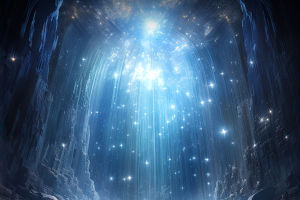Let’s start with something amazing: there are places in the universe where not even light can escape. These are black holes, some of the most mysterious and mind-bending objects out there. They act like cosmic beasts, with gravity so strong that nothing can break free—not even the fastest thing in the universe.
Imagine light racing through space at nearly 300,000 kilometers per second, only to be completely trapped once it crosses a black hole’s boundary. That’s an awe-inspiring sight we’ll never see directly because black holes themselves cannot be observed in visible light.
The Dark Face of Space
From the outside, black holes appear as deep, black voids, swallowing all light around them. Their surroundings are regions where space and time are twisted in extreme ways, creating a zone where the usual rules of physics no longer apply.
Near a black hole, time slows dramatically compared to areas far away. According to Einstein’s general relativity, clocks near a black hole tick much slower, giving a glimpse into how different the universe can behave under such extreme conditions.
How Black Holes Are Born?
Black holes usually form from massive stars at the end of their lives. When a star exhausts its nuclear fuel, it can no longer support its massive weight. Gravity takes over, collapsing the star inward.
If the star is massive enough—beyond about three times the mass of our Sun—this collapse creates a black hole. The star’s core is compressed to incredibly small dimensions, with density so high that atomic structures are destroyed, leaving a state of matter we can barely understand.
The Life and Death of Stars
Stars are like giant energy factories, fusing hydrogen into helium and releasing light and heat. This outward radiation balances the star’s gravity, keeping it stable for billions of years. Our Sun is a perfect example, giving planets energy and light.
But when the fuel runs out, the star can no longer resist gravity. It collapses, like a massive building losing its structural supports. If the collapse continues past the Oppenheimer limit, a black hole is born. A star ten times the Sun’s mass can shrink from millions of kilometers wide to just a few dozen kilometers, compressing unimaginable amounts of matter.
The Mysterious Singularity
At a black hole’s center lies the singularity—a point of infinite density and zero volume. All matter swallowed by the black hole ends up here. Gravity becomes unimaginably strong, twisting space and time to extremes.
Near the singularity, time nearly stops, and space curves in ways we can barely imagine. Our current physics can’t fully describe this region, making it one of the greatest mysteries of the universe. Scientists are exploring quantum gravity to understand the singularity better.
The Event Horizon: The Point of No Return
The event horizon is a black hole’s boundary. Once anything crosses it, escape is impossible—even light is trapped. A spaceship crossing this line would be pulled inexorably toward the singularity, no matter how fast it tried to flee.
This boundary isolates the black hole’s interior from the outside universe, making it impossible to see what happens inside directly. Observations of matter around black holes, like accretion disks, show material accelerating and emitting strong radiation, providing clues about the event horizon.
Hawking Radiation and the Evaporating Black Hole
In 1974, Stephen Hawking proposed that black holes aren’t completely black. Due to quantum effects near the event horizon, particle-antiparticle pairs can appear. One particle may fall into the black hole, while the other escapes.
This process gradually reduces the black hole’s mass, a phenomenon known as Hawking radiation. Small black holes evaporate faster, while massive ones, like those at galaxy centers, lose mass extremely slowly, taking trillions of years to show noticeable changes.
The Puzzle of Information
Information is the arrangement of particles—the “code” behind matter. Carbon atoms arranged in one way make diamond, in another, graphite. Similarly, stars, planets, and even living beings are made from the same particles, but arranged differently.
When matter falls into a black hole, its information seems lost. Hawking radiation complicates this, creating the black hole information paradox. If information disappears, our core physics theories, which rely on information conservation, are challenged.
Hidden or Encoded?
Some theories suggest the information isn’t destroyed but hidden in a separate, inaccessible universe formed by black hole gravity. Others propose the holographic principle: black holes encode information on their 2D surface, the event horizon, like a giant cosmic hard drive.
Matter falling in is torn apart, but its information is stored as quantum bits, interconnected through quantum entanglement. This means our3D reality inside might just be a projection of this encoded information.
Rethinking Reality
If the holographic principle applies to the entire universe, our perceived 3D world could be a projection from a 2D surface at the cosmic edge. Mountains, rivers, buildings, birds—even we—might be part of a cosmic hologram.
This challenges everything we think about reality, space, and time, prompting deep questions about what is truly real.
Looking Up
Lykkers, every time we glance at the night sky, we’re glimpsing a universe stranger than anything we can imagine. Black holes push the limits of what we know about space, time, and reality itself. By exploring them, we uncover hidden cosmic secrets and gain a deeper sense of our place in the universe. Keep looking up—the universe still has countless surprises waiting for us.


